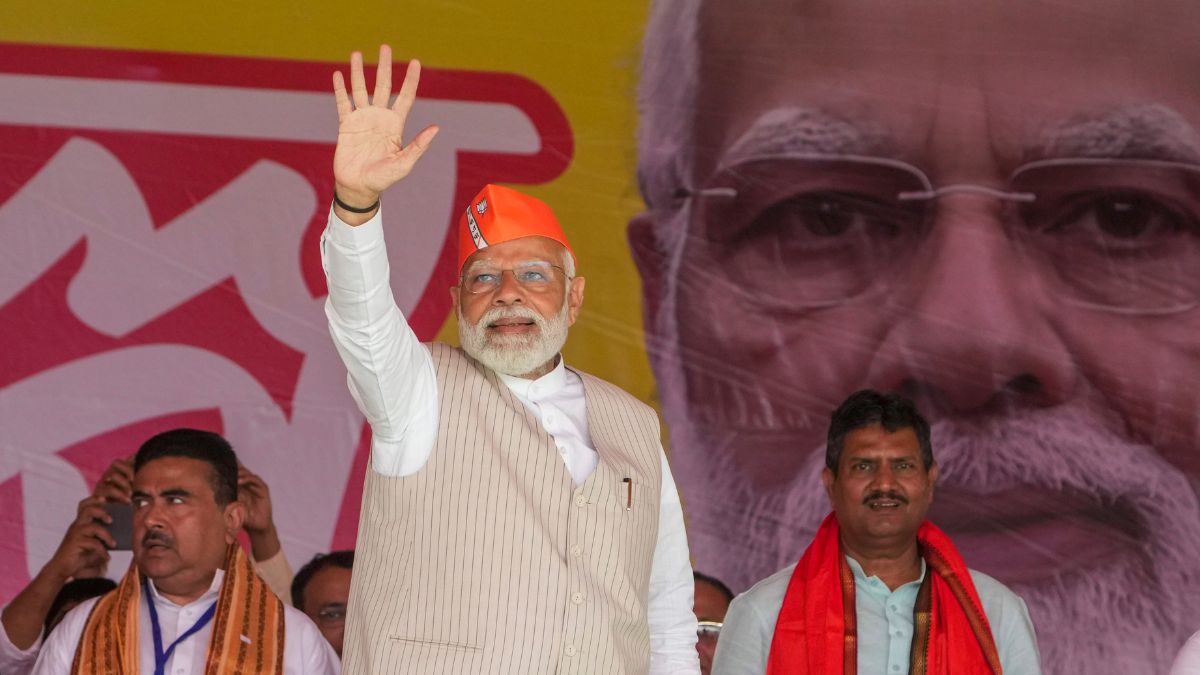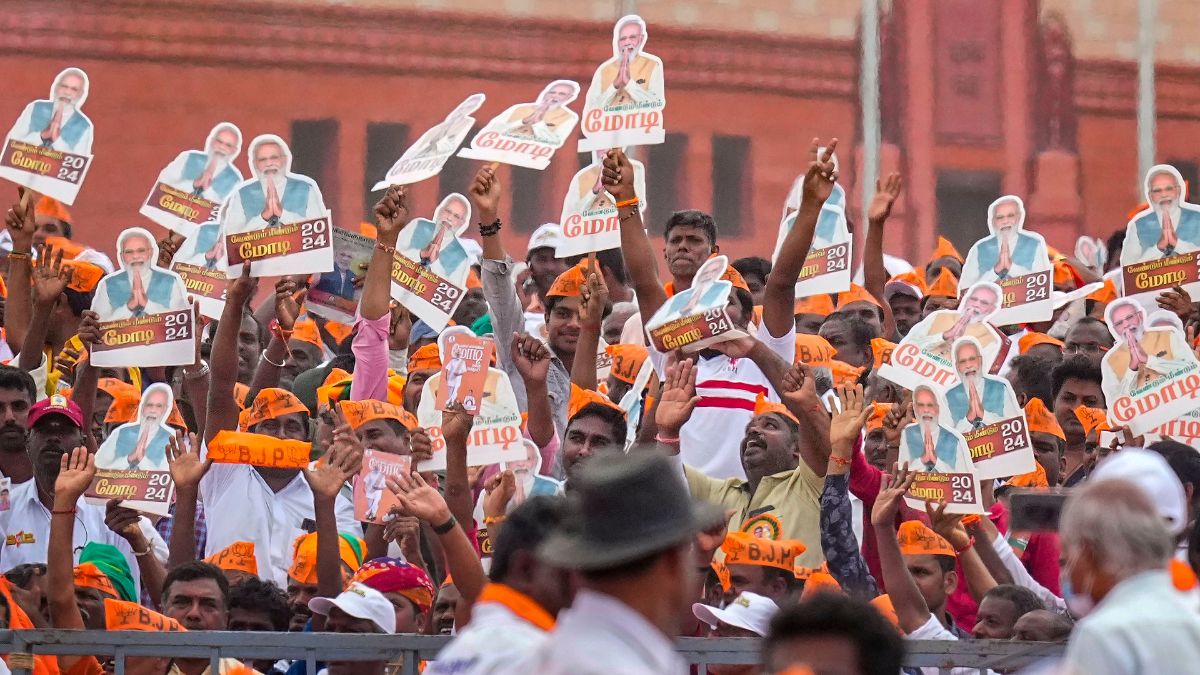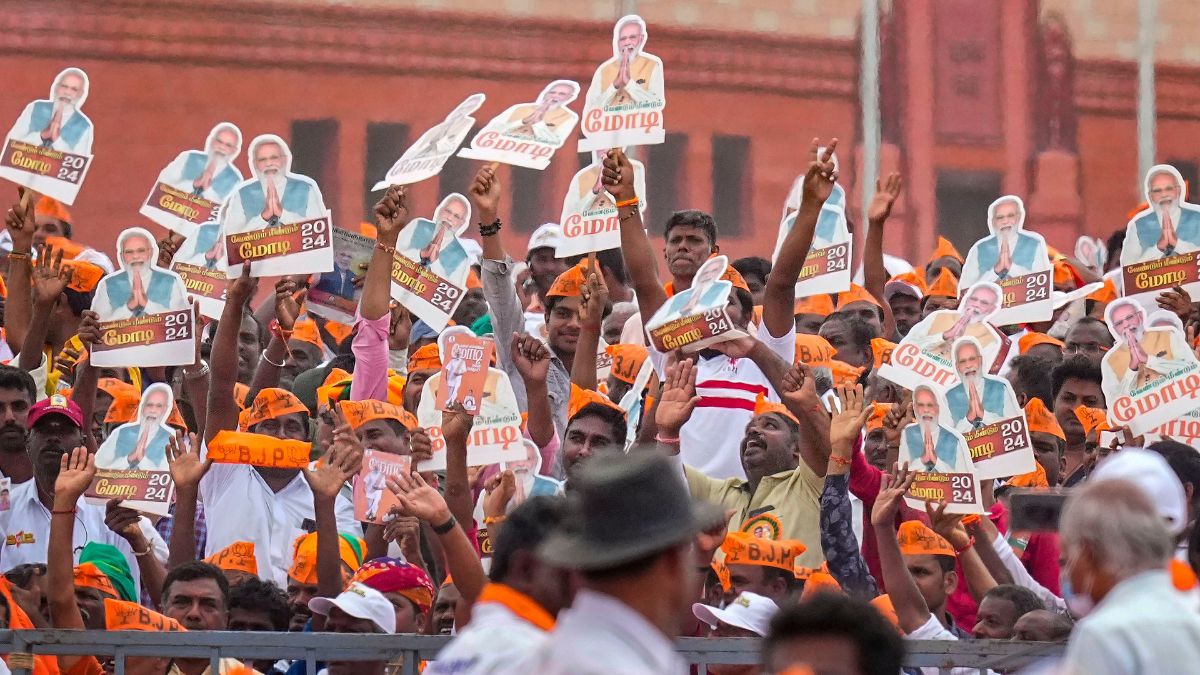Hypocrisy and paranoia underlie the outrage that the BJP and the Congress have expressed against AAP’s proposal to hold a referendum on whether or not Delhi-ites want their city to become a full-fledged state. For instance, Delhi BJP chief Satish Upadhyay described AAP’s referendum proposal as yet another evidence of Chief Minister Arvind Kejriwal’s “anti-Constitution anarchist nature.”
Upadhyay will be mortified to know that Prime Minister Narendra Modi designed and conducted a referendum during his tenure as chief minister of Gujarat. The referendum of April 2009 asked the Gujaratis to stamp ‘yes’ or ‘no’ on three related questions – did they want the money stashed in Swiss banks to be repatriated to India? Should the money funneled back be spent on the poor? Should the government initiate measures to unearth black money?
Obviously, it was never thought the naysayers would win the referendum. Yet the state unit of the BJP showed tremendous enthusiasm to conduct the referendum. Ballot boxes were placed at public places – railway stations and shopping malls for instance – and autorickshaws ferried them from colony to colony. Gujarat’s referendum on black money lasted all of two days and even children were reported queuing to express their opinion.
The result of the referendum was remarkable but not astonishing – 98 per cent of people wanted Indian money in Swiss banks to be brought back. Hurrah!
But this isn’t the only instance of the BJP endorsing the idea of referendum. In 2011, when the movement for carving out the state of Telangana was cleaving Andhra Pradesh, BJP state president G Kishan Reddy wanted then President Pratibha Patil to take the initiative for organising a referendum on the contentious issue. He mooted this idea in response to the suggestion of Congress leader P Chidambaram that political parties of Andhra Pradesh should evolve a consensus on Telangana instead of making contradictory demands on the Union government.
In other words, Reddy’s preference was to directly seek the opinion of people on the statehood issue, precisely what AAP wants, rather than to have it held hostage to intense competition among political parties, each calculating what stance could have them harvest of a better crop of votes.
It isn’t as if there is no precedence of seeking popular opinion to decide on the future of an entity, whether Union Territory or State. For instance, in December 1966, Parliament enacted the Goa, Daman and Diu (Opinion Poll) Act, outlining the process by which the status of these three places was to be determined.
On 16 Jan 1967, under the Opinion Poll Act, people voted to choose between two options – whether Goa should remain a Union Territory or merge with Maharashtra and Daman and Diu with Gujarat. The merger option had the symbol of flower; the other a pair of leaves. Goa, ultimately, voted against the merger, polling 54.20 per cent of votes. (Goa became a state in 1987).
Though styled as Opinion Poll, it was in essence a referendum, as it asked people to choose between one of the two options. Nor was it that this process was adopted because Goa didn’t have a popular House. It then had a 28-member Assembly, which was fractured on the issue of whether to retain its independent identity or merge with the neighbouring States.
In the 1964 Goa election, the Maharashtrawadi Gomantak Party (MGP) had bagged 16 seats and the United Goans Party (UGP) the remaining 12. The MGP favoured merger with Maharashtra, arguing that Konkani was a dialect of Marathi and not a separate language. The MGP was on a good wicket, because from 1920 onwards, the Congress had recognised that language would be the basis of organising state units in the country after independence.
By contrast, the UGP was opposed to merger with Maharashtra, claiming Goa’s culture was uniquely different from its mighty neighbour’s and Konkani was a language separate from Marathi. It also didn’t want Goa’s future to be decided in the Assembly, where the MGP would have won easily.
To stall this possibility, the UGP leader, Dr. Jack de Sequeira, began a hectic round of lobbying with Jawaharlal Nehru. However, Nehru died before a decision could be taken. Both the MGP and UGP lobbied with Nehru’s successor, Lal Bahadur Shastri, but even he died before the process of determining Goa’s future could be firmed up. Indira Gandhi became the prime minister and the Congress bosses such as K Kamaraj called the shots.
Perhaps this was why Goan Congress chief Purushottam Kakodkar’s support for referendum proved crucial. He was said to be close to the Nehru-Gandhi family and was also an organizational man. It is believed his intervention, ultimately, led to the enactment of the Opinion Poll Act, which bound the Union government to accept the popular verdict of 16 Jan 1966.
This brief history of Goa gives lie to Delhi Congress chief Ajay Maken’s claims that Kejriwal’s idea of referendum is “a dangerous ploy with grave fallout.” The Goa opinion poll was indeed a referendum by another name. Perhaps the Act didn’t use the nomenclature of referendum as the word had acquired an ominous echo because of the India-Pakistan joust over Kashmir.
Yet, in 1978, the word referendum was proposed to be incorporated into the Indian Constitution. This was courtesy Law Minister Shanti Bhushan, who moved the Forty-fifth Amendment bill, later amended to be titled the Forty-fourth. Its statement of objectives and reasons said that certain changes in the Constitution could not be made unless “approved by the people of India by a majority of votes at a referendum in which at least fifty-one per cent of the electorate participate.”
Broadly, the Bill envisaged referendum for four types of changes. These pertained to the secular and democratic character of the Constitution, abridging or abrogating of fundamental rights, impeding the conduct of free and fair election, and compromising the independence of judiciary. The proposal making referendum mandatory was to be incorporated after clause 2 of Art 368, which lays out the process of amending the Constitution.
However, the clause of referendum was defeated in the Rajya Sabha, where the Janata Party didn’t have the requisite majority. It was consequently not incorporated in the Constitution, but the Forty-fourth Amendment Act retains the idea of referendum in its statement of purposes and reasons.
What the BJP forgets is that its leaders, AB Vajpayee and LK Advani, were then in the Janata Party government. As has always been the practice, the Cabinet would have approved the Amendment Bill providing for referendum before Bhushan introduced it in Parliament. Therefore, Vajpayee and Advani were as much party to the idea of referendum as any other member of the 1978 Union Cabinet.
The idea of referendum that the 44th amendment envisaged could have had far deeper consequences than what AAP wants – that is, to determine whether or not the people of Delhi want a full-fledged state. It seems the BJP and the Congress are deliberately fanning fears that a referendum in Delhi could trigger these tendencies in states susceptible to separatist movements.
This is plain paranoia. The very first article of the Constitution 1 states that “India, that is Bharat, shall be a Union of States.” It implies the indestructible unity of the Union, a fact borne out by the Constituent Assembly debates. Art 2, however, allows new states to be admitted into the Union. This is how Sikkim became a part of India, after, yes, a referendum was held there.
Obviously, the referendum AAP plans to hold will not have any legal sanctity and, therefore, the majority opinion thus expressed will not be binding on the Union government. AAP’s referendum, though, can mount moral, and popular, pressure on the Union to bestow on the Delhi government the powers other states enjoy, besides exposing the doublespeak of the BJP and Congress. Both pledge to fight for a full statehood for Delhi periodically, only to forget it thereafter.
But for any referendum, formal or informal, to acquire a moral edge must have a high percentage of voters’ participation and should not invite the charge of having been manipulated. It shouldn’t be seen as a gimmick, as Gujarat’s referendum on black money was. Thus, ideally, a referendum to have credibility must be supervised by the Election Commission.
But therein lies the catch – the Delhi Election Commission (DEC) works under the Election Commission of India (ECI). The DEC can’t accede to the request of the Delhi government unless it has the approval of the ECI, which will require a statutory provision, such as the Goa Opinion Poll, to order a referendum.
Can AAP on its own conduct a credible referendum? Can it, at least, turn the referendum into a springboard for a full-blown movement to win the status of a full-fledged state for Delhi?
Should it indeed turn into a movement with tremendous momentum, then for the first time India will have a full-fledged state based not on linguistic or cultural or ethnic identity or other exclusivist principles, but on administrative convenience and efficacy. It could also lead to empowering people with the weapon of referendum for countering government policies inimical to their interests, as it has in Greece.
(Ajaz Ashraf is a journalist from Delhi. His novel, The Hour Before Dawn, published by HarperCollins, is available in bookstores. Email: ashrafajaz3@gmail.com _)_


)




)
)
)
)
)
)
)
)